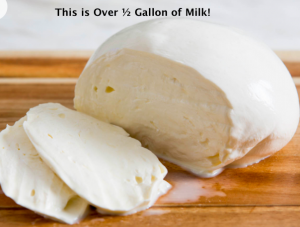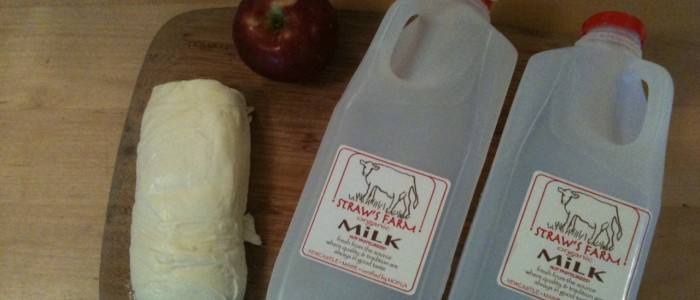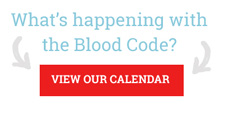Cheese is an incredibly concentrated form of milk. We once made fresh mozzarella from a full gallon of raw milk. After removing the pork-tenderloin sized piece of cheese from the cheesecloth, my three children came down and devoured nearly all of it with a sprinkle of salt and a fresh sprig of basil.

Three children devoured a gallon of milk’s worth of cheese. That’s equal to over 5 glasses of milk per kid – in about 5 minutes! The raw milk I used from Jersey cows contained incredibly nutritious protein and fats, but the lactose sugar in milk is a simple sugar, like pure glucose. And of course, milk and cheese have no fiber to slow down the sugar effect so there is a huge insulin response from this food.
SO, cheese needs to be respected. It is easy to eat too much, because the bulky water was filtered out. And the lack of fiber and load of insulin-stimulating lactose sugar is a problem if you have the thrifty ability to store too much – like hypothyroid or insulin resistance.
With that said, aged cheese and especially raw aged cheese, like romano and 2-year cheddar have minimal amounts of lactose sugar due to the enzyme action during the months in the rind. Therefore the sugar effect is minimized with these cheeses, but it is still easy to eat too much.
Three Cheese Rules in The Blood Code Diet
Choose aged cheese, especially raw aged cheese over fresh cheeses like mozarella
Use cheese as a condiment, not a main course.
Eat cheese with a meal that has plenty of soluble fiber—add it to cooked & raw vegetables.




I would offer a different opinion. Lactose is not concentrated to the cheese during the make process. The majority of the lactose is removed with the Whey. While not suggesting large amounts of cheese can be consumed without regard to lactose, cheese contains a much reduced percentage of the lactose from the original amount of milk. Cheese varieties have different amounts of remaining lactose, however, eating cheese produced by one gallon of milk is not the equivalent of drinking the entire gallon.
Well-put. The dryer the cheese, the less the carb, the draining/straining of the cheese making process does remove much of the lactose. – in about 1 full cup of shredded Mozzarella there is only about 5 +/- grams of simple carbohydrate. – RM
In general, yorgut along with most all dairy products is not really recommended on the 4 hour body diet. The key thing is to make sure to get 30 grams of protein as soon as possible after waking up. This can come from a protein shake as a last resort but eggs usually lead to really good results. I would really recommend trying eggs for a few weeks and see what happens.
The Lactose sugar in dairy is a simple sugar that triggers the highest insulin response of all simple sugars. Yes higher insulin response than glucose itself. So unless you are trying to make a bigger body, the addition of dairy is risky business in excess. Eggs, veggies and fats are my go-to breakfast 350 days per year – although I only eat about 2-3 eggs, so only about 18-20 grams of protein, but that is because I am not hungry for more food in the morning. – Fellow Low-carb traveller – R Maurer